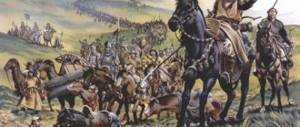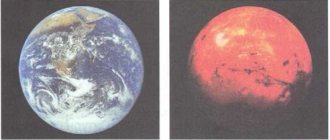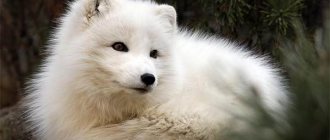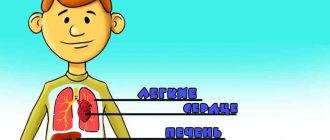Research project “The Amazing World of Insects”
Natalya Belyaeva
Research project “The Amazing World of Insects”
The relevance of research
Most modern children rarely communicate with nature. Therefore, our project is aimed at ensuring that we learn to love and take care of the world around us. And this work must begin with the most numerous and ancient inhabitants of our planet - insects . Insects are a miracle of our nature. Their world is unique and very fragile. These little creatures live almost everywhere. They tolerate heat and cold well and remain alive after freezing and thawing. They are attractive and amazing , they are hardly noticeable due to their tiny size and are diverse, our knowledge about them, unfortunately, is very, very scarce, but their influence on our lives is enormous. Stop, look around. Any insect , regardless of its size and role in nature, upon careful study turns out to be infinitely interesting and entertaining. People have written many poems, fairy tales, riddles and songs about these amazing There is no need to be afraid of them, they need to be protected and loved.
Objective of the project :
Get acquainted with the class of insects , find their meaning in nature.
The project was created and participated by:
Pupils and parents of the senior group;
managers – Yarkova T. I. and Belyaeva N.I.
Venue: MADOU kindergarten "Fairy Tale"
.
Project type : information and research .
Type of project : Group, long-term.
Project organization
Stage 1. Statement of the problem, determination of the purpose and objectives of the research work
Research problem insects had already appeared in the kindergarten area . We began to watch insects . But the knowledge that we received in class was not enough to draw correct conclusions and explain our observations. Therefore, we had questions: Who are insects ? Are insects necessary on Earth ? How should a person treat insects ? We set ourselves the goal of finding answers to these questions, and this is how the topic of our research “ The Wonderful World of Insects ,”
.
research hypothesis was put forward (put forward in the process of joint discussion)
: if we learn more about
insects , we understand what an important role they play for nature and humans, then we will appreciate and take care of everything that surrounds us.
In accordance with the problem and hypothesis of the study, together with the teacher, the following tasks were set for further research of the problem :
1. Find out as much as possible about the world of insects , how they live, what they eat, what benefits or harm they bring to people, how they protect themselves from enemies.
2. Create mini projects “My favorite insect ”
.
3. Cultivate a kind attitude towards our little neighbors around the planet.
Object of study : insects .
Subject of research : insects living in the kindergarten area.
Research results :
1. Creation and protection of individual mini- projects .
2. Design of the exhibition “ The Amazing World of Insects ”
.
3. Presentation design.
Methods: conversation with parents; observations; studying literature, searching for information in the library, on the Internet together with parents; excursion to the library, museum, experiment.
Stage 2. Organization of research within the project
1. Collection, analysis and systematization of information about the characteristics of the life of insects , what they eat, where and how they live, what benefits or harm they bring to people, about some of their protective properties, about human attitudes towards insects :
selection of literature about insects , search for information on the Internet: poems, riddles, proverbs, sayings, stories, fairy tales;
Discussion of fiction: K. Ushinsky “Cabbage White”
, V. Bianchi
“The anthill moved”
, G.
Ganeiser “The Invisible Grasshopper”
, N. Sladkov
“Hives and Lemongrass”
,
“Ant and the Centipede”
,
“The Tale of the Fly and the Bumblebee”
(Dietrich, G. Yurmin, R. Koshurnika. Pochemuchka., L. N. Tolstoy
“About ants”
, I. Sokolov-Mikitov
“Ants”
, I. A. Krylov
“Dragonfly and Ant”
,
K. I. Chukovsky “The Tsokotukha Fly”
;
learning poems about insects ;
monitoring insects in the kindergarten area;
excursion to the library to an exhibition of children's books on the topic " Insects "
;
excursion to the museum - the theme of the exhibition “ The Amazing World of Insects ”
viewing and discussion of cartoons “Ant’s Journey”
,
"Maya the bee"
;
Doing homework with parents: mini-project “My favorite insect "
.
2. Creative cognitive activity of children:
Expanding knowledge about insects through educational games:
"Who lives where"
,
“Dance of
the insects ” ,
“Bees”
,
“The fourth wheel”
,
“Word game”
,
“Build a logical chain of beetles”
.
Drawing, modeling from salt dough, designing from paper, making insect crafts together with parents ;
3. Experimental activities:
Experiment 1: How is a butterfly similar to an elephant?
Experiment 2: Ant track.
During the study , we interviewed parents; observed; studied literature, looked for information in the library, on the Internet together with their parents; went on an excursion to the library and museum, conducted experiments.
Insects are a miracle of our nature. These little creatures live almost everywhere. any insect turns out to be endlessly interesting and entertaining. We were convinced of this when we watched insects . We saw: a grasshopper jumping on blades of grass, colorful butterflies fluttering from flower to flower. We learned what insects eat , where and how they live, what benefits or harm they bring to people, how they protect themselves from enemies, how people treat insects . We learned to compare insects according to their method of movement (a bee, a fly, a dragonfly fly; a grasshopper jumps; identify insects by the sounds they make and name them correctly (a bee, a fly, a beetle buzz; a grasshopper chirps)
.
How is a butterfly similar to an elephant? We learned about this when we conducted experiments with insects . The butterfly has a long, hollow proboscis that looks like a long pipe. The proboscis is usually curled, but it extends when the butterfly smells food, such as something sweet. We can say that the butterfly acts with its proboscis, almost like an elephant with its trunk. Or the “ant track”
. We found an anthill on the site of the kindergarten. Next to the anthill, 2 paths were poured: one with sand, the second with granulated sugar. Soon we saw several ants crawling around the paths. About an hour later we saw a long chain of ants moving towards the treat and back. On an evening walk we discovered that only the sand path remained and the sugar path had disappeared. We found out that as soon as one ant finds food, it begins to leave behind a pheromone trail, along which other ants follow.
At the museum, the guide told us a lot of amazing things about insects , we looked at the exhibits with interest.
We were invited to the library for an exhibition of children's books on the topic " Insects "
, to the museum for the exhibition
“
The Amazing World of Insects ” .
Many stories, poems, fairy tales, riddles and songs have been written
about these amazing We looked at books, illustrations, met the authors, and then took part in a quiz. Stage 3. Presentation of research
1. Participation in the exhibition “ The Wonderful World of Insects ”
.
2. Presentation of an individual mini- project “Butterfly”
3. Participation in the intellectual game “Finest Hour”
.
4. Presentation of the project “ The Amazing World of Insects ”
.
Together with my parents, we received homework: complete a mini project “My favorite insect ”
, make a craft for this
insect . our projects in a group.
My favorite insect is the butterfly . I learned how a butterfly appears: it lays eggs, caterpillars hatch from the eggs, the caterpillar turns into a pupa, and a butterfly hatches from the pupa. Butterflies are the best pollinators of plants. And some flowers are generally pollinated only by butterflies.
Together with my parents I took part in the intellectual game “Finest Hour”
.
We performed various tasks, and the jury determined who of us knew the most about the life of insects . Each participant had a support group that cheered for them and helped them receive stars. Our parents also did not stand aside; there were trials for them too. The game was interesting, fun, there was a lot of music and songs.
Conclusions: We learned a lot about the class of insects , how they live, what they eat, what benefits or harm they bring to people, how they protect themselves from enemies, we learned to explain our observations and draw conclusions. When we conducted experiments, we learned about the benefits of many insects , we realized what an important role they play for nature and humans, and in the future we will appreciate and take care of everything that surrounds us. At the end of the study, we made a conclusion that confirmed our assumption: if we learn more about insects , understand what an important role they have for nature and humans, then we will appreciate and take care of everything that surrounds us.
This project confirmed that in the future it is necessary to study nature, form an aesthetic attitude towards it, deepen knowledge, improve skills, and maintain individuality. And then the interest in cognitive and research activities that appeared in the process of work will remain for life, and will treat nature and our smaller brothers with love.
References:
1. Large illustrated encyclopedia.M: “Swallowtail”
, 2003.
2. Glen Vecchione “Do it yourself! 100 most interesting independent scientific projects ."
3. Internet source: vsezagadki.ru
4. Internet source: domnagorke.ru
5. Tanasiychuk V. Visiting insects : Stories. – M., Children's literature, 1970.
6. Shorigina T. A. Insects . What are they?
7. Hoffman G. Who Lives in the Meadow / Transl. with him. T. P. Panfilova. -M: LLC TD "Publishing House World of Books"
, 2008.
8. I explore the world. Insects : encycl. /auth. - comp. P. R. Lyakhov. - AST: Astrel: Guardian, 2007.







